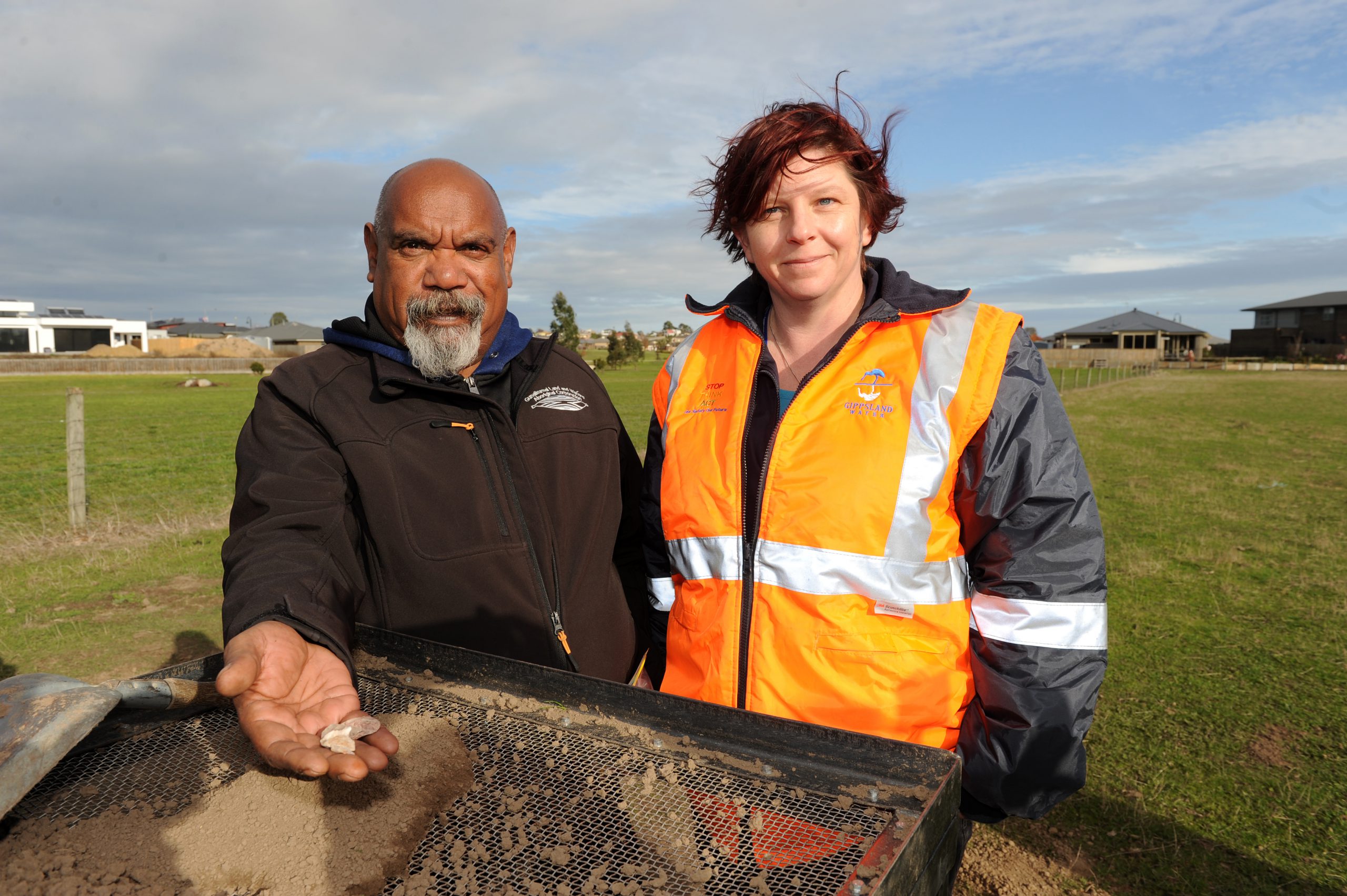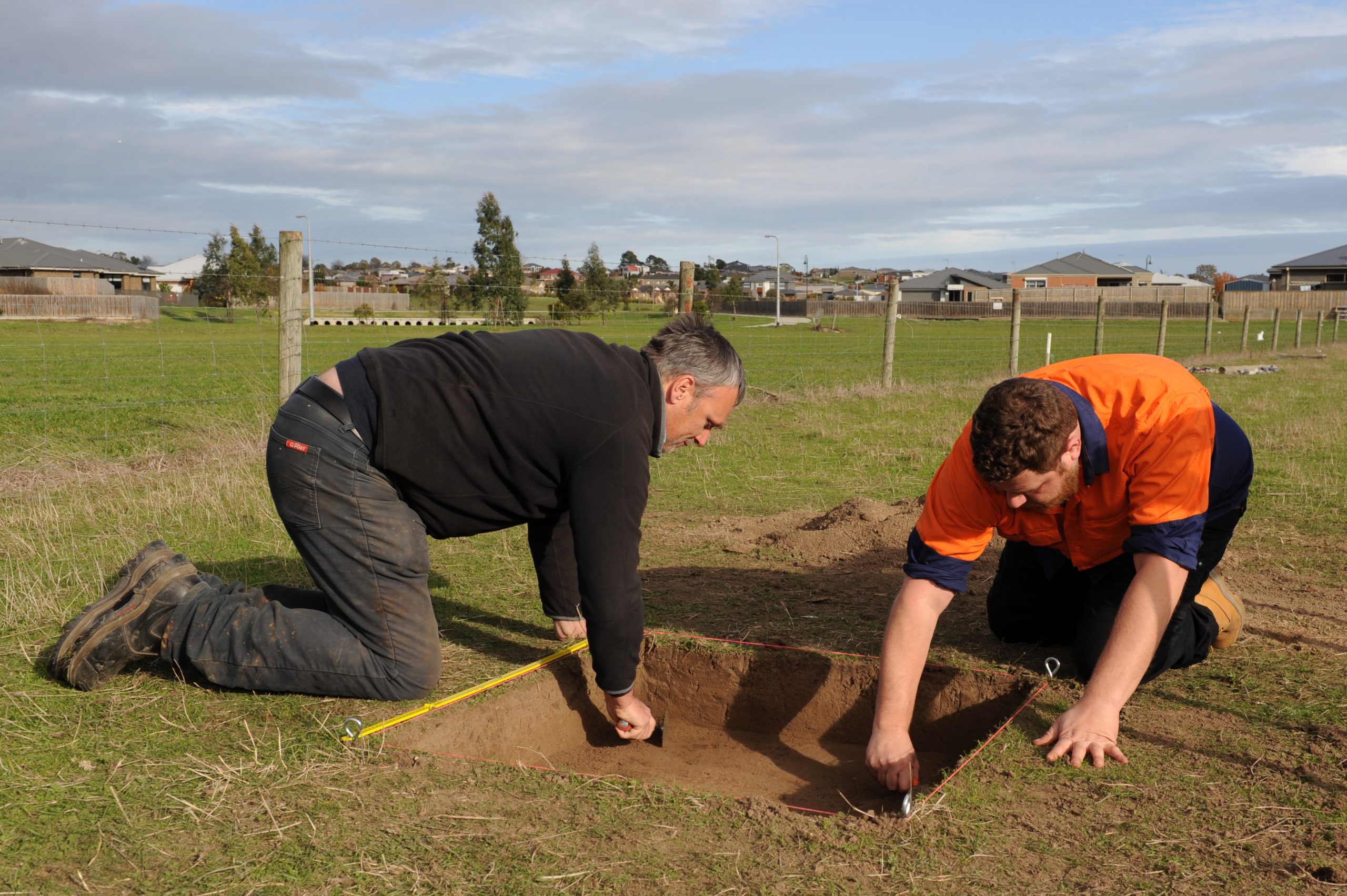Local Indigenous history has been unearthed in Traralgon as part of Gippsland Water works in which stone artefacts were uncovered on the planned site of a sewage pipe.
Gippsland Water discovered 21 artefacts on the site opposite Waterford Court during an assessment of the area in January.
The stone tools made from quartz and silcrete have been sent for analysis, cataloguing and dating and will later be returned to where they were found to be protected in the future.
Gippsland Water is working in collaboration with Gunaikurnai Land and Waters Aboriginal Corporation to salvage any artefacts that may appear in a spot where a bore will be dug.
Gippsland Water senior environmental scientist Deb Archer said the assessments were part of a cultural heritage and management plan.
“Part of our project plan is to look for values that exist where we put our infrastructure, such as environmental or Aboriginal heritage,” she said.
“If we think there will be values, we assess it and look at moving infrastructure to avoid having an impact and work in collaboration with local traditional owners to see the best way to work.”
She said they did a desktop assessment, before digging in 10 centimetre intervals,and finding the artefacts.
Gippsland Water also discovered more than 5300 artefacts in Tyers and more than 1000 objects around Sheepwash Creek during previous salvaging projects.
“This shows the importance of being careful. It’s important they go back into the earth and to respect the history of where they sit,” Ms Archer said.
GLaWAC cultural heritage officer Nicky Moffat said these discoveries, along with scar trees in the area, showed how ancestors would have moved across Gippsland.
He said many of the artefacts would have been used as spearheads or sharp tools to cut animal skins, created with a hammer stone.
“This tells the story of the occupation of the Aboriginal people who are still here today and the amount of activity there had been,” Mr Moffat said.
Mr Moffat said some artefacts found in Fulham had been dated back between 5000 and 7000 years.
He said the further into the ground they were discovered, the older they would be.












